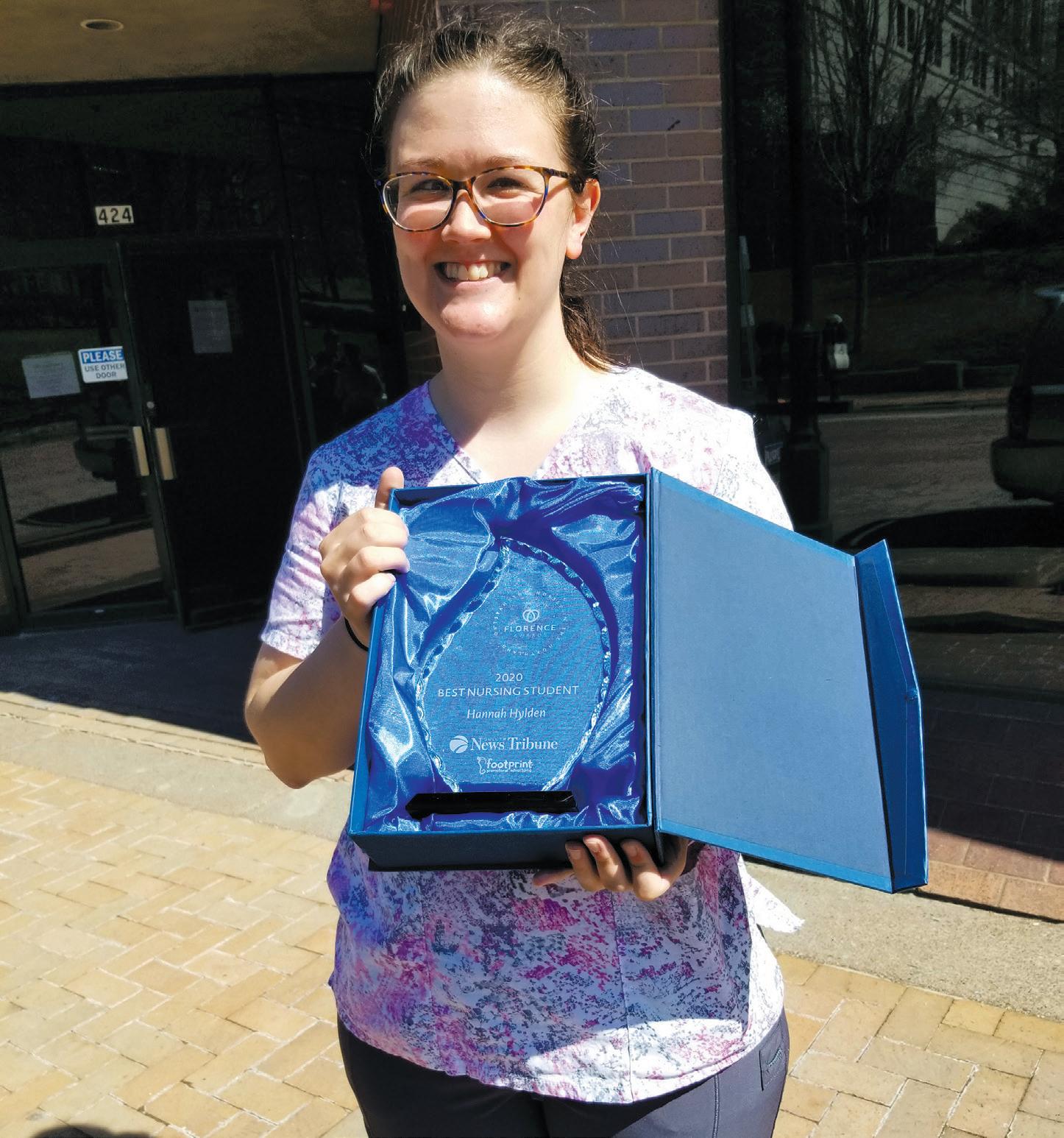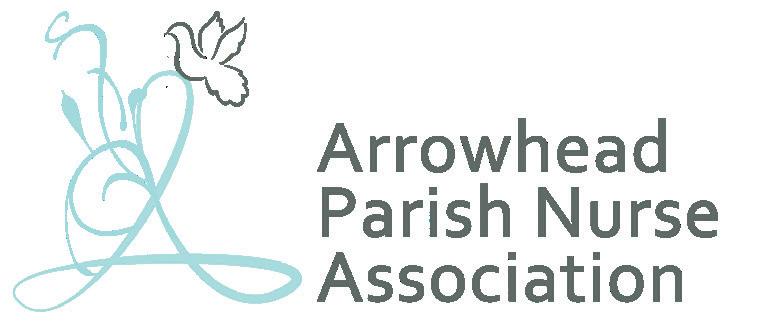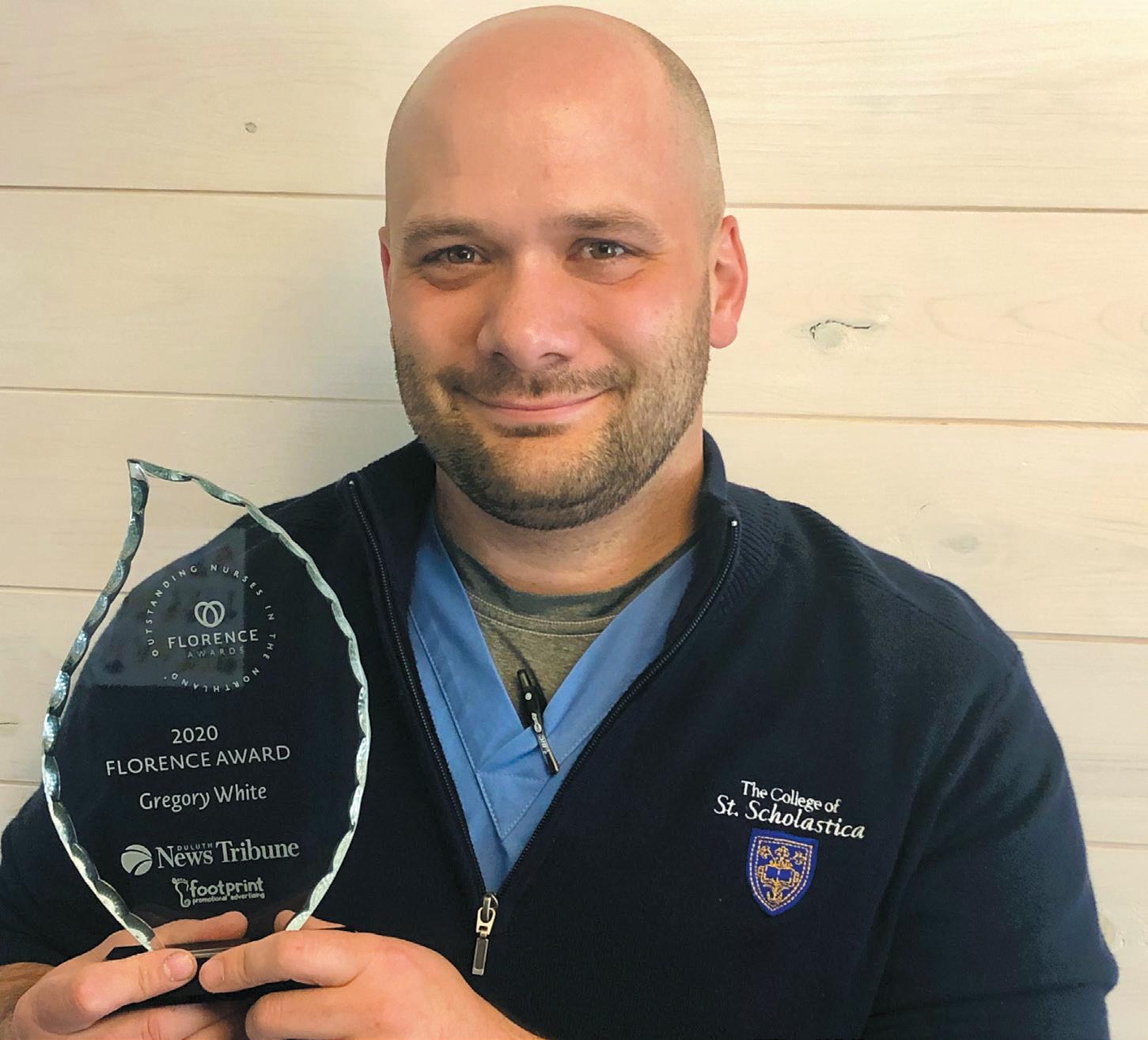
7 minute read
FLORENCE NIGHTINGALE AND THE LEGACY OF NURSING
By Ann Klefstad
In these difficult days, there is no profession more trusted, no person more valued than nurses. For 18 years in a row, nurses have been rated the most honest and ethical profession, according to Gallup surveys. Nurses beat out doctors in this trust matter by 20 percent.
And now, in this pandemic, as in the 1918 flu epidemic, it’s nurses who are on the front lines, because there is no simple curative therapy for COVID-19: survival depends on moment-tomoment observation of patients, their bearing, their physical condition, their temperatures, their skin color, their blood gases, and on quick and accurate reactions to these conditions — in other words, on excellent nursing care.

In 1918, Philadelphia’s health commissioner, Wilmer Krusen, remarked, “If you would ask me the three things Philadelphia most needs to conquer the epidemic, I would tell you, ‘Nurses, more nurses and yet more nurses.’”

Nursing was founded as a profession by Florence Nightingale, a woman often romanticized as “The Lady with the Lamp” but who was far more than that romanticized compassionate woman. She invented the field of data visualization in her development of statistical thinking around hospitals and healing, and she campaigned for women’s right to own a purpose for their lives.
Her compassion was very real, but also real was the incredible way she mobilized resources to do something about that compassion.
Florence Nightingale was born on May 12, 1820, in Florence, Italy (how she got her name) to Frances Nightingale and William Shore Nightingale. Her family was wealthy and her mother a bit of a social climber; Florence had a sister, Parthenope, who served in her later life as a kind of chief information officer for her.
Florence herself was no social butterfly and was interested in subjects well outside the usual social displays favored for young women at the time — a little music, a little watercolor painting, a little culture. Florence wished to make her life matter, and to use the talents she knew she had to make the world better.
Middlesex hospital for ailing governesses, the Institute for the Care of Sick Gentlewomen in Distressed Circumstances. She was promoted to superintendent of the hospital within a year — just in time to take on the cholera epidemic that broke out in the vicinity. Nightingale improved the hospital’s hygiene practices and significantly lowered the death rate at the hospital. This was intuitive on her part; the germ theory of disease was not widely known, and certainly not widely accepted. She herself became ill, but recovered.
She was raised on her family’s estate at Lea Hurst in England, where her father hired tutors for her, giving her a classical education and training in German, French and Italian. Florence interested herself in the lives of the poor in the village near her family’s home, helping to care for the sick.
She came to see nursing as her life’s calling and told her family this. They forbade it. Determined to pursue her true calling despite her parents’ objections, in 1844, Nightingale enrolled as a nursing student at the Lutheran Hospital of Pastor Fliedner in Kaiserwerth, Germany.
In the early 1850s, Nightingale returned to England, where she took a nursing job in a
In October 1853, the Crimean War began: the British Empire fought the Russian Empire for control of the failing Ottoman Empire based in Turkey.
Thousands of British soldiers were sent to the Black Sea to fight. By 1854, 18,000 soldiers had been admitted into military hospitals — many for illnesses of crowding and poor hygiene, only some for wounds. There were no female nurses stationed with the troops — before nursing was formalized as a profession, nurses were sometimes also prostitutes, and Victorians didn’t want them around the soldiers. After the Battle of Alma, however, English people read news of their horrific conditions in which ill and injured soldiers were dying in their thousands. They demanded that something be done.
Florence
From Page 4
In late 1854, Nightingale was asked by British Secretary of War Sidney Herbert to organize a corps of nurses to tend to the sick and fallen soldiers in the Crimea. Nightingale assembled a team of 34 nurses from a variety of religious orders and sailed with them to the Crimea within a few days of Herbert’s request.

Arriving at the barracks hospital at Scutari, she was horrified by its condition. It was, she’d soon write, like stepping into the “Kingdom of Hell.” The barracks, which also served as the hospital, was essentially built over an open sewer; supplies were low and soldiers were often lying in the filthy clothes they had arrived in, their wounds septic and uncleaned. Nightingale purchased hundreds of scrub brushes and put soldiers who were well enough to work to scrubbing and cleaning the hospital quarters. She rented another building to serve as a laundry and began the herculean task of getting clean linen and clothing provided for soldiers. She had boarded windows pried open for better ventilation. She raised money to improve conditions, and to fix the sorry state of the convalescent soldiers’ diet, she hired the bestknown chef in London: Alexis Soyer, a guy as famous then as Anthony Bourdain is now. The reports of Nightingale’s work had made her famous in London, and in early 1855 Soyer joined her. He had famously devised soup kitchens for the Irish Famine and written a cookbook, Shilling Cookery, for good food on a tight budget — after having served as a celebrity chef to the rich and famous.
Florence and Alexis admired one another, became friends, and created an effective partnership. Soyer taught soldiers how to run a kitchen, creating more and better meals faster, cheaper, and with a minimum of waste. Healthy food prepared in a clean environment, and enough of it, helped cut mortality rates. Soyer also designed a portable gas field stove, regulation kit in the British Army until the 1980s.
Nightingale halved the death rate in the Scutari hospital, but she acquired “Crimea fever,” most likely brucellosis — which took a chronic form. She suffered from its effects the rest of her life. But when the war was over, she composed her book Notes on Nursing: still in print, and the foundation for modern nursing. She wrote more books as well: some on nursing; some on the visualization of statistics; and a novel (Cassandra) that presents the idea that women’s lives should be as purposeful and selfchosen as those of men.
With a grant of $250,000 from a grateful government, Nightingale decided to establish a hospital (St. Thomas’s) and the Nightingale Training School for Nurses. She became a worldwide celebrity and consultant on nursing and hospitals, publishing Notes on Hospitals in 1859; during the American Civil War she consulted on American field hospitals. The “pinning” of nurses as a graduation ritual came from Queen Victoria’s gift to Nightingale of the “Nightingale Jewel,” an engraved brooch.

From The Army To Nursing An Interview With Jordon Sanford

By Ann Klefstad
Jordon Sanford, BSN Class of 2020, College of St. Scholastica SPC, Army National Guard
What was the Army experience that made you want to train as a nurse?
Nursing Education In Duluth

By Ann Klefstad
The College of Saint Scholastica took up Nightingale’s ideas of training nurses in science as well as in patient care, and started the first baccalaureate nursing education program in the area in 1928. It was taught, at the time, by Benedictine sisters, and nurses sewed their own uniforms.
Times have changed, but the holistic nature of nursing has not changed. Sheryl Sandahl, dean of the School of Nursing at CSS, notes the constancies and the changes. She says, first, that nursing was founded in holistic treatment of patients as people in context, as people with lives, not just diseases. That holistic aspect hasn’t changed. What has changed is the vast volumes of data and technology that nurses now have to work with.
“The tech has become more complex, but we still have to remember to look at the patient and not only the monitor,” said Sandahl.
The technology and new knowledges are positive for practice, she says, but they definitely complicate the practice, and “it’s not so much about skills as it’s about that thinking piece — so, say, here’s a patient who has had problems with oxygenation, and they’re not reacting as you’d expect.” You have to be able to take the technical data, the patient observation data, the patient’s history, their emotional state, together. “You still have the physical patient that you have to strike a relationship with, a trusting therapeutic relationship — and then you’ll get more accurate data,” she explained.
In 1951, the first year in which the Bachelor of Science degree in nursing was offered by CSS, Joyce Klefstad of Duluth graduated in pediatric nursing and public health. She went on to work in orphanages in the area, then studied pediatric nursing practices in Denver and in England. She returned to help establish pediatric nursing at Fairview hospitals in Minneapolis, using toy wagons for patient transport and striped pajamas rather than hospital gowns. She made a lasting mark on pediatric nursing in the state. Her daughter, Heidi Christiansen Haines, also became a nurse and speaks eloquently about the profession she knows so well.

I took the leap to transfer to The College of St. Scholastica with help from the Invite program, as I was recruited into the Veterans to Nursing program. The Invite faculty is absolutely great and the other students in the program were very relatable, as we all have had military experience. The specific Army experience leading to train me as a nurse would be the fast-paced environment and stressful situations that carry over to nursing.
SANFORD: Page 7
“When you become a nurse from that kind of program it becomes a key part of your identity, it becomes a key part of your life,” Heidi said. “I knew that what I had learned in systems theory, interviewing, body language, transferred to anything else in my life. Anything that has to do with caring in your life . . . I think all nurses feel that way, you’re very practiced at both micro and macro thinking. You’re tending to an individual, but it’s everything around them as well. It’s empathy. . . . You gain trust by thinking holistically, by putting yourself in others’ shoes, by dealing with uncertain outcomes.”








